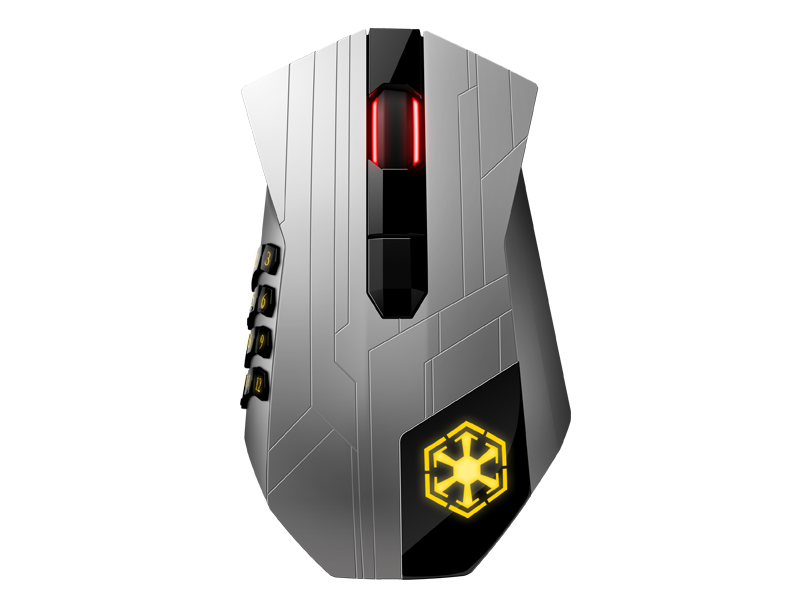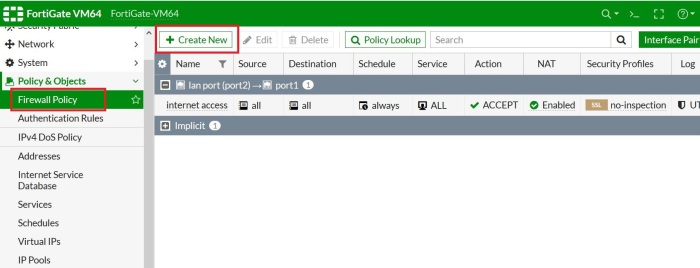The package provides the installation files for FTDI USB Serial Port Driver version 2.12.16.0. If the driver is already installed on your system, updating (overwrite-installing) may fix various issues, add new functions, or just upgrade to the available version. TCP/8001 (by default; this port can be customized) While a proxy is configured, FortiGate uses the following URLs to access the FortiGuard Distribution Network (FDN): update.fortiguard.net.
This article describes how to download and install firmware from a local TFTP server via the BIOS, under CLI control.
Caution: Installing firmware from a local TFTP server under console control will reset the FortiGate unit to factory default settings.
If possible, consider backing up the configuration before starting the TFTP server firmware upgrade.
Component:
- A null modem, or RJ-45 to DB9 console cable, supplied with the FortiGate unit.
- An Ethernet RJ45 cable
- A terminal client, such as a PC running HyperTerminal (Windows)
- A TFTP server (see below the recommended software)
Recommended TFTP software:
Winagents.
https://www.winagents.com/en/products/tftp-server/
Download the FortiGate firmware and verify MD5 checksum:
1) Download the required firmware from the Download Firmware Images page.
2) Make a note of the name of the downloaded file, for example FGT_100E-v6-build1723-FORTINET.
3) On the support site use the Download -> Firmware Image Checksums link, enter the filename with a .out extension. For example FGT_100E-v6-build1723-FORTINET.out.
4) Select get checksum code and the system will generate MD5 Checksum Code (for example: 9b1e345711a95d9fe05481e9f2b8bdb0) and SHA-512 Checksum Code.

2) Restart the FortiGate.

3) When the console displays 'Press any key to display configuration menu..' press the space bar or any other key.
5) The below confirmation message will appear. Type 'yes' and press Enter:
It will erase data in boot device. Continue? [yes/no]:yes
6) After the unit is formatted, a list of choices with letter of Alphabets come up again. Press G to continue to firmware installation.
7) Connect the computer running TFTP server to the FortiGate unit. The port is prompted in the console output as below:
Please connect TFTP server to Ethernet port 'MGMT' / other port
8) Type the IP address of the computer running the TFTP server and press Enter.
The console displays:
Enter TFTP server address [192.168.1.168]:
9) Type the IP address of the FortiGate port that is on the same subnet as the TFTP server and press Enter.
The console displays:
Enter Local Address [192.168.1.188]:
10) Type the firmware image file name and press Enter.
The console displays:
Enter File Name [image.out]:
The console periodically displays a '#' (pound or hash symbol) to show the download progress.
11) When the download completes, the console displays a message similar as below, Press D.
Save as Default firmware/Backup firmware/Run image without saving:[D/B/R]?D
The FortiGate unit installs the new firmware image and restarts. The installation may take a few minutes to complete.
Troubleshooting:
Once entering the firmware image name and pressing enter, the FortiGate unit MAC address appears and the '#' symbols indicate the progress of the install.
If the MAC address does not show up, check the network cable and connector to ensure they are firmly attached to the FortiGate unit.
If MAC address shows up and no '#' signs appear, check which port the network cable is in. Use the table above in step 2 to ensure it is in the right port.
Sample Console Output:
The following is an example of what the output from the console can look like. Depending on the FortiGate unit, this may vary slightly.
FortiGate-40C (12:29-05.08.2013)
Ver:04000009
Serial number: FGT40C123456789
CPU(00): 525MHz
Total RAM: 512MB
Initializing boot device..
Initializing MAC.. nplite#0
Press any key to display configuration menu..
[G]: Get firmware image from TFTP server.
[F]: Format boot device.
[I]: Configuration and information.
[B]: Boot with backup firmware and set as default.
[Q]: Quit menu and continue to boot.
[H]: Display this list of options.
Enter G,F,I,B,Q,or H:
It will erase data in boot device. Continue? [yes/no]:yes
Formatting..... Done.
[G]: Get firmware image from TFTP server.
[F]: Format boot device.
[I]: Configuration and information.
[B]: Boot with backup firmware and set as default.
[Q]: Quit menu and continue to boot.
[H]: Display this list of options.
Enter G,F,I,B,Q,or H:
Please connect TFTP server to Ethernet port '5'.
Enter TFTP server address [192.168.1.168]: 192.168.0.5
Enter local address [192.168.1.188]: 192.168.0.6
Enter firmware image file name [image.out]: FGT_40C-v5-build0701-FORTINET.out
MAC:085B0E14BB3E
###################################
Total 37651242 bytes data downloaded.
Verifying the integrity of the firmware image.
Total 262144kB unzipped.
Save as Default firmware/Backup firmware/Run image without saving:[D/B/R]?D
Programming the boot device now.
.......................................................................................................
Reading boot image 1393286 bytes.
Initializing firewall..
System is starting..
Starting system maintenance..
Scanning /dev/sda2.. (100%)
FGT40C123456789 login:
Versions supported
- Windows 10
- Windows 8.1
Applies to
- Device manufacturers of CDC Control devices
Microsoft-provided in-box driver (Usbser.sys) for your Communications and CDC Control device.
In Windows 10, the driver has been rewritten by using the Kernel-Mode Driver Framework that improves the overall stability of the driver.
- Improved PnP and power management by the driver (such as, handling surprise removal).
- Added power management features such as USB Selective Suspend.
In addition, UWP applications can now use the APIs provided by the new Windows.Devices.SerialCommunication namespace that allow apps to talk to these devices.
Usbser.sys installation
Load the Microsoft-provided in-box driver (Usbser.sys) for your Communications and CDC Control device.
Note

If you trying to install a USB device class driver included in Windows, you do not need to download the driver. They are installed automatically. If they are not installed automatically, contact the device manufacturer. For the list of USB device class driver included in Windows, see USB device class drivers included in Windows.
Windows 10
In Windows 10, a new INF, Usbser.inf, has been added to %Systemroot%Inf that loads Usbser.sys as the function device object (FDO) in the device stack. If your device belongs to the Communications and CDC Control device class, Usbser.sys is loaded automatically.You do not need to write your own INF to reference the driver. The driver is loaded based on a compatible ID match similar to other USB device class drivers included in Windows.
USBClass_02
USBClass_02&SubClass_02
- If you want to load Usbser.sys automatically, set the class code to 02 and subclass code to 02 in the Device Descriptor. For more information, see USB communications device class. With this approach, you are not required to distribute INF files for your device because the system uses Usbser.inf.
- If your device specifies class code 02 but a subclass code value other than 02, Usbser.sys does not load automatically. Pnp Manager tries to find a driver. If a suitable driver is not found, the device might not have a driver loaded. In this case, you might have to load your own driver or write an INF that references another in-box driver.
- If your device specifies class and subclass codes to 02, and you want to load another driver instead of Usbser.sys, you have to write an INF that specifies the hardware ID of the device and the driver to install. For examples, look through the INF files included with sample drivers and find devices similar to your device. For information about INF sections, see Overview of INF Files.
Note
Microsoft encourages you to use in-box drivers whenever possible. On mobile editions of Windows, such as Windows 10 Mobile, only drivers that are part of the operating system are loaded. Unlike desktop editions, it is not possible to load a driver through an external driver package. With the new in-box INF, Usbser.sys is automatically loaded if a USB-to-serial device is detected on the mobile device.

Windows 8.1 and earlier versions
In Windows 8.1 and earlier versions of the operating system, Usbser.sys is not automatically loaded when a USB-to-serial device is attached to a computer. To load the driver, you need to write an INF that references the modem INF (mdmcpq.inf) by using the Include directive. The directive is required for instantiating the service, copying inbox binaries, and registering a device interface GUID that applications require to find the device and talk to it. That INF specifies 'Usbser' as a lower filter driver in a device stack.
The INF also needs to specify the device setup class as Modem to use mdmcpq.inf. Under the [Version] section of the INF, specify the Modem and the device class GUID. for details, see System-Supplied Device Setup Classes.
For more information, see this KB article. Gale banks engineering usb devices driver download for windows drivers.
Configure selective suspend for Usbser.sys
Starting in Windows 10, Usbser.sys supports USB Selective Suspend. It allows the attached USB-to-serial device to enter a low power state when not in use, while the system remains in the S0 state. When communication with the device resumes, the device can leave the Suspend state and resume Working state. The feature is disabled by default and can be enabled and configured by setting the IdleUsbSelectiveSuspendPolicy entry under this registry key:
To configure power management features of Usbser.sys, you can set IdleUsbSelectiveSuspendPolicy to:
Driver Download For Windows 10
'0x00000001': Enters selective suspend when idle, that is, when there are no active data transfers to or from the device.
'0x00000000': Enters selective suspend only when there are no open handles to the device.

That entry can be added in one of two ways:
Write an INF that references the install INF and add the registry entry in the HW.AddReg section.
Describe the registry entry in an extended properties OS feature descriptor. Add a custom property section that sets the bPropertyName field to a Unicode string, 'IdleUsbSelectiveSuspendPolicy' and wPropertyNameLength to 62 bytes. Set the bPropertyData field to '0x00000001' or '0x00000000'. The property values are stored as little-endian 32-bit integers.
For more information, see Microsoft OS Descriptors.
Develop Windows applications for a USB CDC device
Fortinet Port Devices Driver Download For Windows Firewall
If you install Usbser.sys for the USB CDC device, here are the application programming model options:
Starting in Windows 10, a Windows app can send requests to Usbser.sys by using the Windows.Devices.SerialCommunication namespace. It defines Windows Runtime classes that can use to communicate with a USB CDC device through a serial port or some abstraction of a serial port. The classes provide functionality to discover such serial device, read and write data, and control serial-specific properties for flow control, such as setting baud rate, signal states.
In Windows 8.1 and earlier versions, you can write a Windows desktop application that opens a virtual COM port and communicates with the device. For more information, see:
Win32 programming model:
.NET framework programming model:
Related topics
